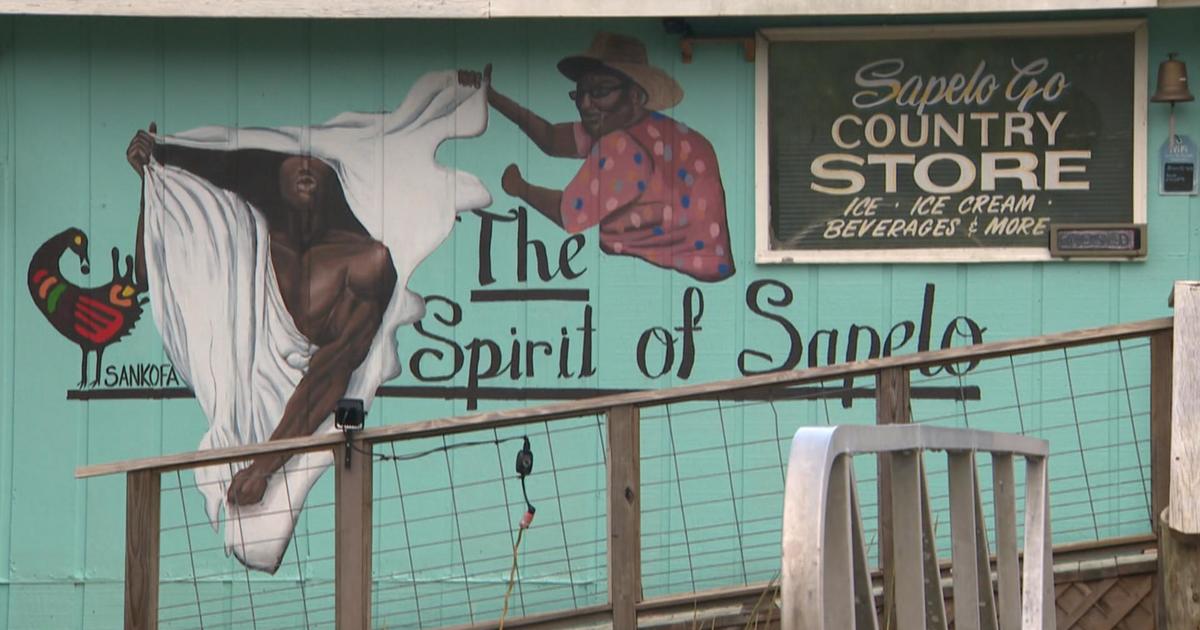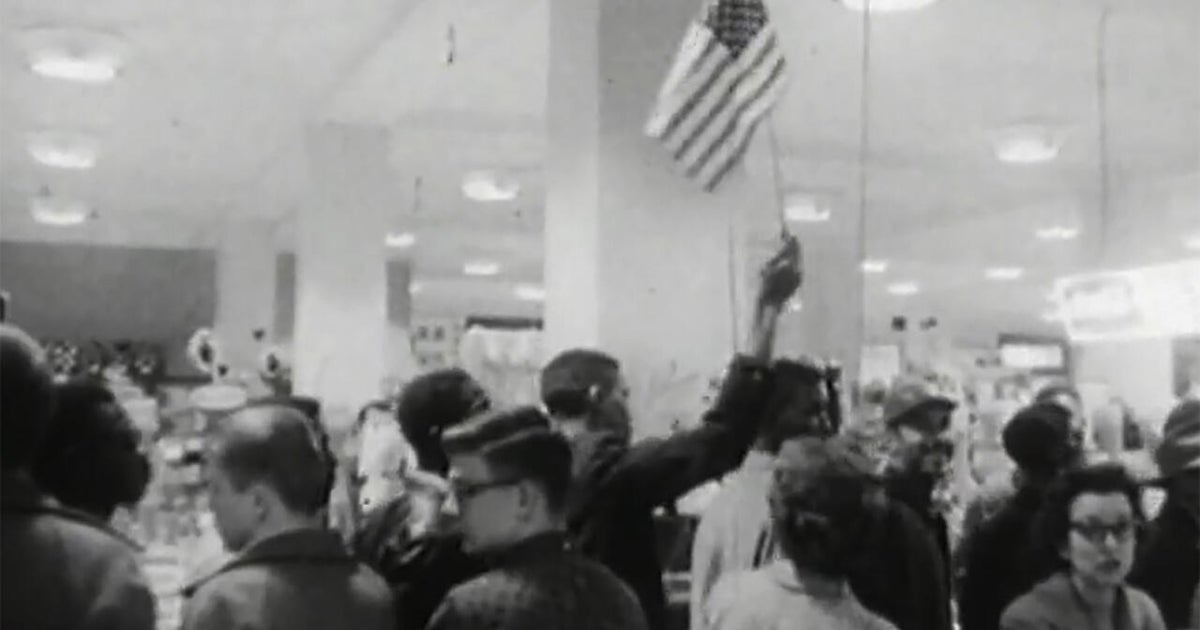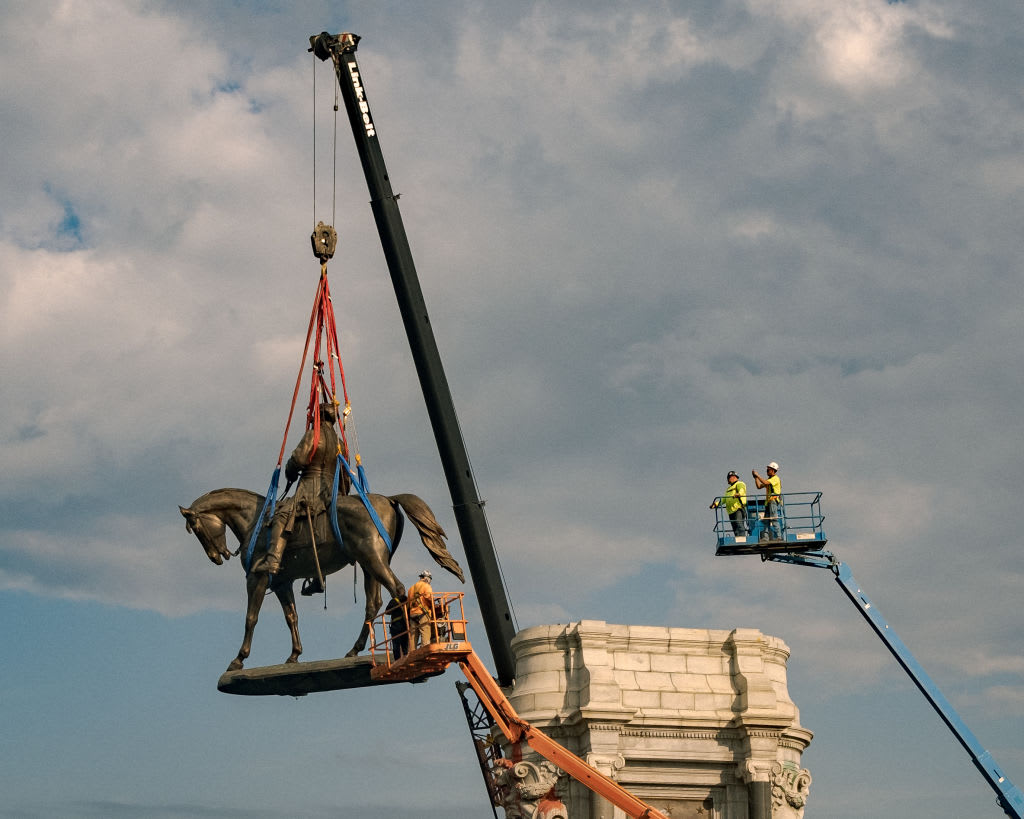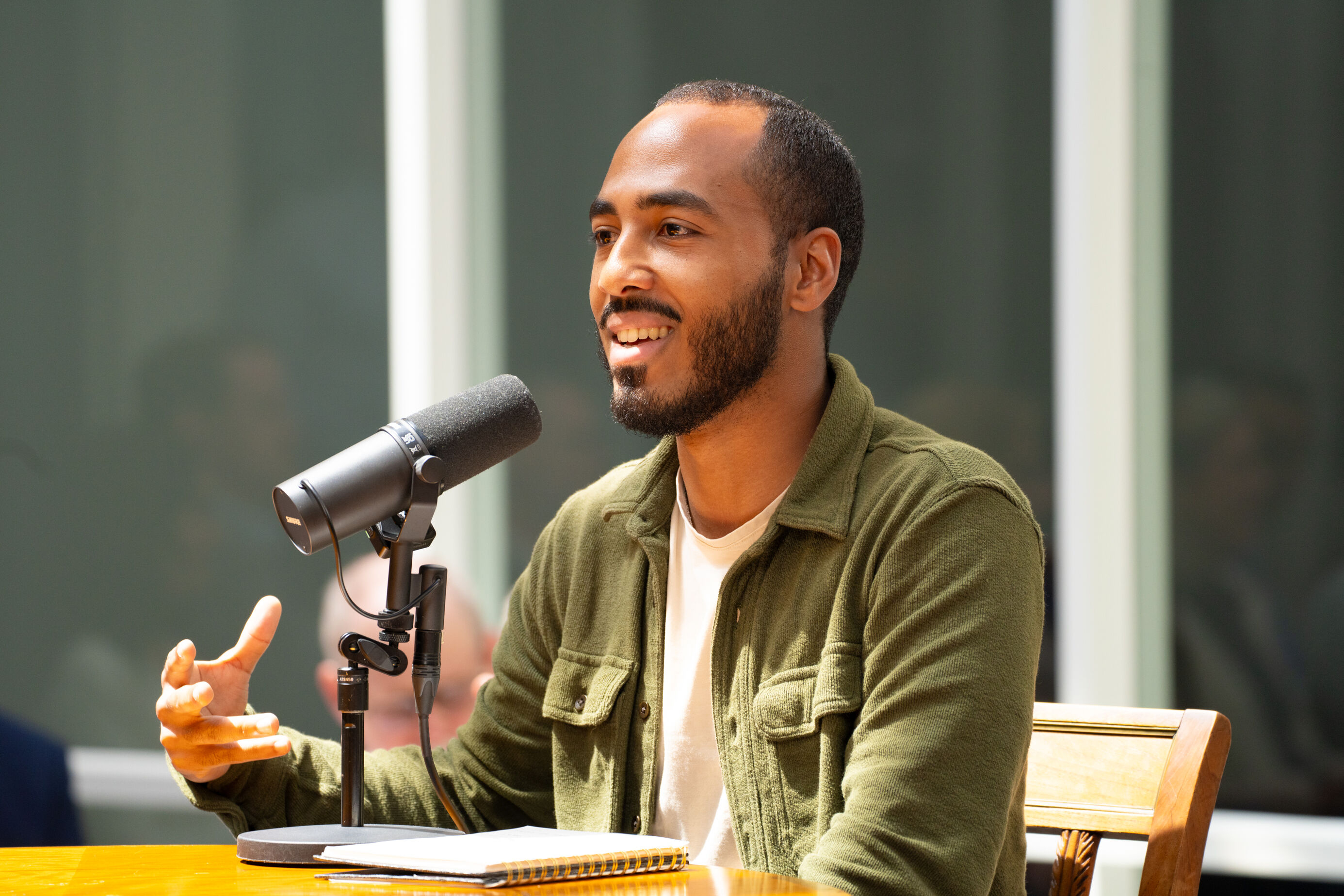A historical reckoning for the global slave trade
At the Tate Modern museum in London, they've just reopened after the coronavirus lockdown, to discover that the installation – thought to be bold when it first opened in the museum's enormous entrance hall last fall – now seems positively clairvoyant.
It's a statement about slavery by American artist Kara Walker. As she explains in an accompanying video, "[This] is an allegory of the Black Atlantic, and really all global waters which disastrously connect Africa to America, Europe, and economic prosperity. England was the beneficiary of the slave trade and its products. And so, you have this kind of institution that spans many hundreds of years, and everybody's implicated in it."
Everbody's implicated in it, including the people who endowed this very museum, named for the Tate family that made its fortune in the sugar business, a business founded on slave labor. Big artwork, big irony, notes correspondent Mark Phillips.
And if the statue looks a little familiar, that's because it's modeled after one of the most famous monuments in London: the imposing memorial to Queen Victoria that has sat in front of Buckingham Palace for more than a century. It features classic imagery to commemorate a monarch who reigned at the height of the power of the British Empire, while Walker's monument at the museum (titled "Fons Americanus") shows the dark side of imperial history – the horrors of the forced transport of slaves from Africa to work in Britain's colonies in North America and the Caribbean.
The work was commissioned well before the killing of George Floyd and the growth of the Black Lives Matter movement, which has taken hold here, too, with large demonstrations on the streets of London and other cities.
"It feels very timely," said Tate curator Achim Borchardt-Hume, who feels the artwork is even more relevant now. "Now we are in a moment where, both in the U.K. and also in the States, the conversation around what happens to monuments in the public realm is everywhere."
Part of the conversation in England, as in the U.S., involves controversial symbols of the past. A crowd toppled a statue of slave trader Edward Colston in the port city of Bristol. They then dumped it in the same harbor from which his ships once sailed to pick up cargoes of slaves in Africa.
"Personally, I did not shed a tear for the pulling down of Colston in Bristol," Keith McClelland told Phillips. "I mean, the man was a monster."
McClelland should know about slave-trading monsters; he and a team of historians at the prestigious University College London spent years creating a database of all of the slave-owners in Britain who were paid compensation when slavery was abolished here in the 1830s.
Meticulous records from the time show the payout was enormous, the equivalent of about $3 billion now, given not to the slaves, but to the slave owners.
"The information is all there, it's all public," McClelland said of the Legacies of British Slave-ownership database. Who got the money? Some were wealthy pillars of society, like George Hibbert, paid about £40,000 then – about $6 million in today's money.
"This is a man who didn't need the spare change by the look of it," said Phillips.
Hibbert owned thousands of slaves; some owned far fewer, like Ann Huie, who received almost £49 (worth about $7,000 now) in compensation for her two enslaved people.
"The government only actually paid the loan back to the Bank of England in 2015," said Birmingham City University Black Studies professor and writer Kehinde Andrews. To him, the fact the British government used borrowed money to compensate the slave owners – and only recently finished paying off the loan – means that, in a cruel twist, the generation of immigrants who moved to Britain from the Caribbean ended up footing part of the bill.
"Me, my grandmother, and all the descendants of the enslaved have actually been paying back reparations to slave owners for slavery, through our taxes," Andrews said. "It's insane, right?"
"You've been paying back for your own enslavement?" asked Phillips.
"Yeah, we literally paid for our ancestors' freedom," Andrews said.
The prosperity of many modern British companies and families can be traced back to original investments made with those payments. The Greene King pub chain is just one example; it has now been embarrassed into pledging funds to fight racism.
The same goes for Lloyds of London, one of the world's biggest insurance markets, which made huge profits from the slave trade.
Andrews said, "Lloyds of London is so deeply rooted in slavery, it's where it started. Its business model was insuring slave ships. The idea they could just suggest a diversity scheme and give away some money to charity is, frankly, offensive."
Philips asked, "Is this a point of which the next stage of the change happens?"
"Well, I think it's interesting that it took the killing of somebody 3,000 miles away for Britain to start to acknowledge its racism in many different forms," said Andrews.
It's not just happening in Britain. The death of a man under the knee of an American cop has forced several former colonial powers to confront the darker sides of their history. In Paris, the statue of Jean-Baptiste Colbert, author of the "Black Code" for the treatment of slaves in French colonies, was splattered in red paint.
In Belgium, statues of King Leopold II, infamous for his brutal rule over 10 million Africans in the Congo, met a similar fate.
George Floyd's killing, said Andrews, "is really just the straw that broke the camel's back. In America the protests aren't just about police brutality or that killing. They're about everything else. And here it's the same way. We have the same problems of economic disadvantage, education disadvantage, unemployment, COVID-19. And so, we are seeing – and have seen historically – racism is not an American problem; it's a world problem. And now, we're having that global conversation."
In Bristol, where the slave trader Edward Colston's statue had stood, a local artist put up a statue of one of the protesters.
The city took it down the next day. The conversation has a way to go yet.
For more info:
- Tate Modern, London
- Keith McClelland, University College London
- Kehinde Andrews, School of Social Sciences, Birmingham City University
- Legacies of British Slave-ownership (Database)
Story produced by Mikaela Bufano. Editor: Brian Robbins.









